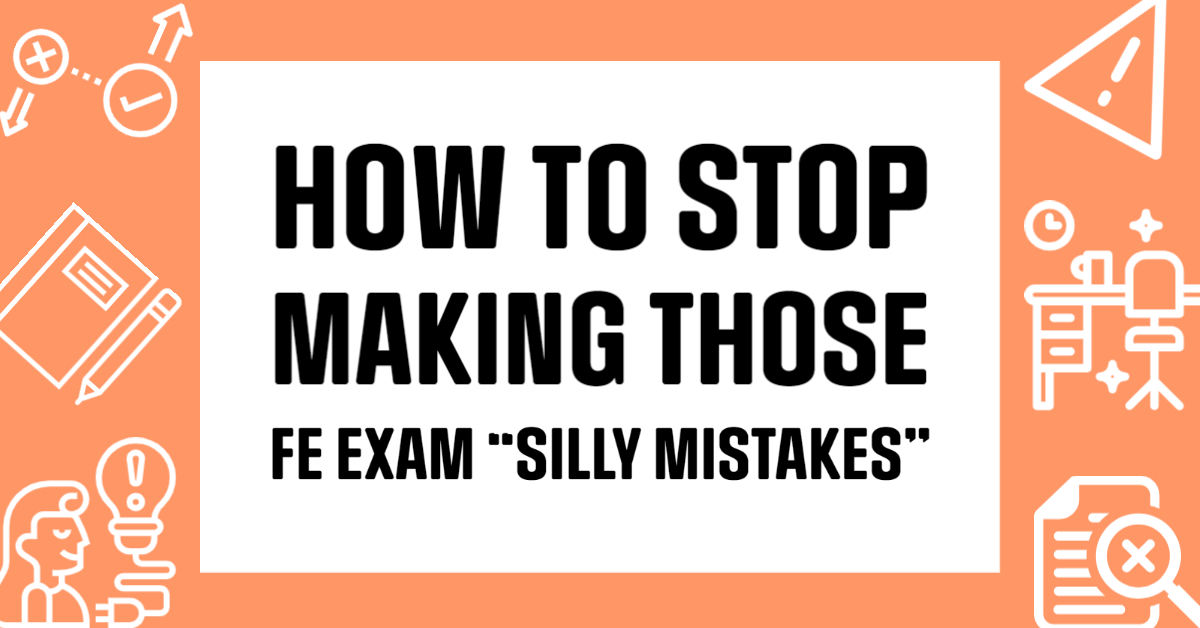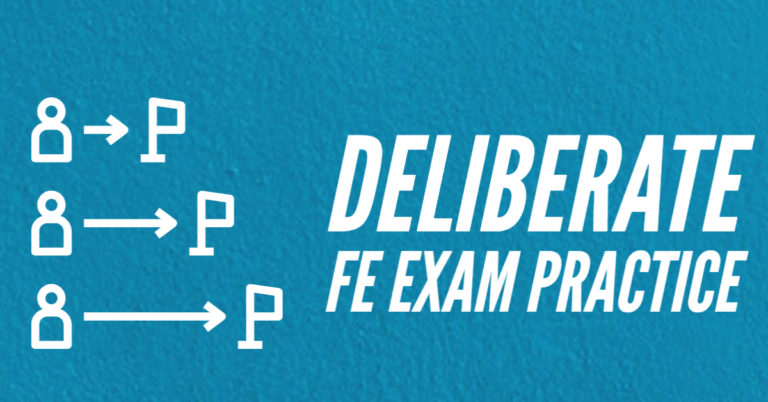How to stop making those FE exam “silly mistakes”
As a learner, tutor and instructor, I’ve made a lot of silly mistakes when solving problems and still continue to do so till this day! Knowing exactly why I made a silly mistake is usually harder than it sounds. Sometimes it’s a unit conversion mistake; other times it may be a mistake due to poor reading and writing habits. Am I writing too fast? Am I misreading the problem statement? What’s really caused me to make this silly mistake?
Over the years, I’ve gotten better at being aware of these mistakes and developing the right habits to not make them too often.
As you progress through your FE exam preparation, I want to share some tips with you that will help you avoid all kinds of silly mistakes.
1. Create a notebook containing all your FE Exam silly mistakes.
In order to avoid mistakes, we need to be aware of them. Whether you’re doing practice problems, quizzes, or a practice exam, you should always keep track of any silly mistakes you’re making when solving problems.
How do you know what mistakes you might make? You can start asking questions similar to these:
- Are you reading the problem statement too fast?
- Are you misreading the problem statement?
- Are you forgetting to convert units before plugging everything into the calculator?
- Are you making an algebraic mistake?
Keep your notebook of silly mistakes simple. Many of my students print out the practice problems in the direct hub course and write down the exact reason why they made a silly mistake on certain practice problems. They eventually notice a trend where they’re making the same mistakes on specific types of problems or concepts.
Below are two examples showing my red marks for a unit conversion mistake and my red marks for a common mistake I make by forgetting to square the diameter (d) term. Notice how I precisely define the mistake and also write down a reason as to why it happened and try to think of how I can avoid it next time.
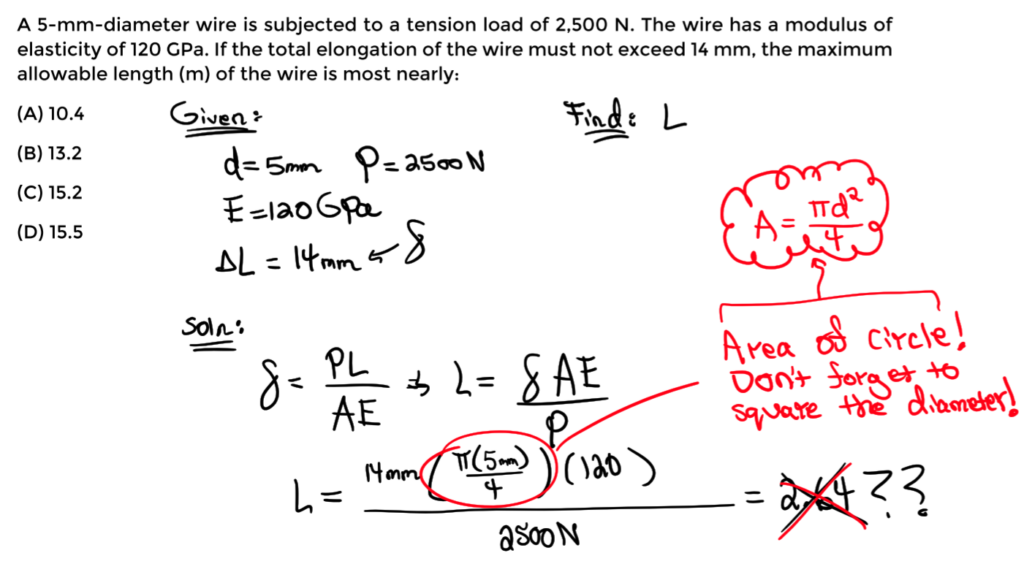
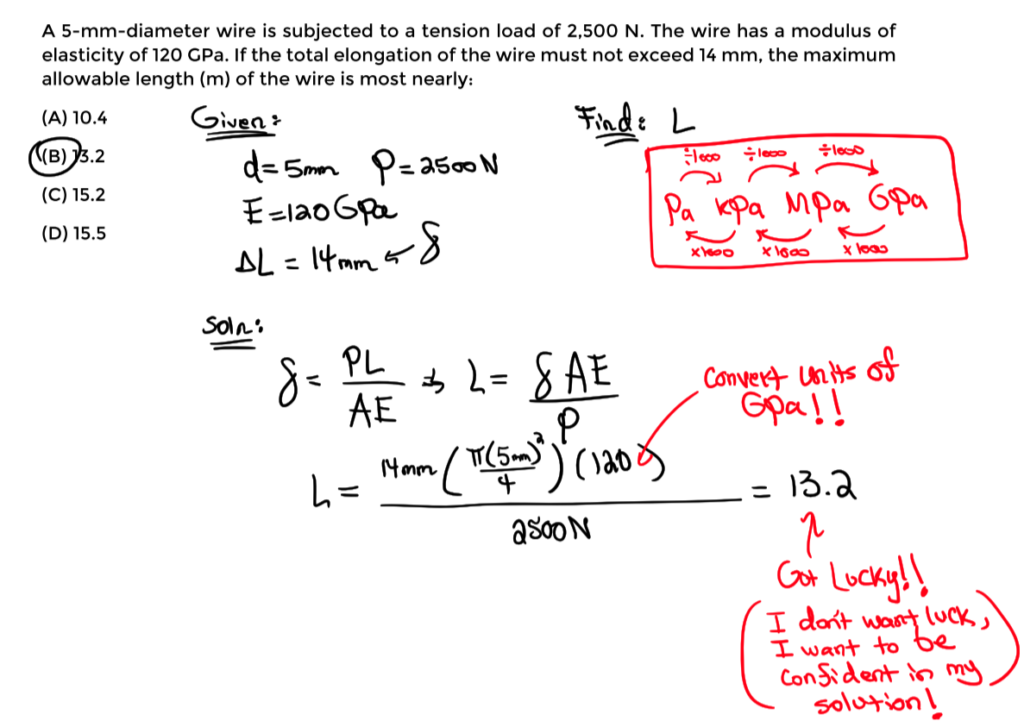
Practice writing yourself little notes and reminders for things you’re likely to forget—make a list of key words before you tackle a long problem statement, or make a note of the correct unit conversions.
2. Slow it down and read the question more than once
One of the biggest sources of errors is misreading the question. The best way to avoid this is to read the question more than once. If you get stuck on a problem, read it again to make sure you know exactly what you’re given and what you’re looking for.
Do this often. This repeated question reading may seem like a waste of time, but if you make it a habit, you’ll get to the point where you’ll do it so fast that you don’t even notice it.
3. Write clearly
This habit is hard to develop. If your work is untidy and difficult to read, you will likely misread numbers, mess up signs, and so on. If you’re looking at your work and asking, “What does this say?”, it’s time for you to practice writing neater. Again, slow it down if you have to. With time, you will get faster at writing neater solutions as you continue to consciously practice writing neater.
4. Organize your Work
Organizing your work can go a long way toward eliminating those silly mistakes. You can apply the GIVEN, FIND, SOLUTION approach similar to the one shown in the image below.
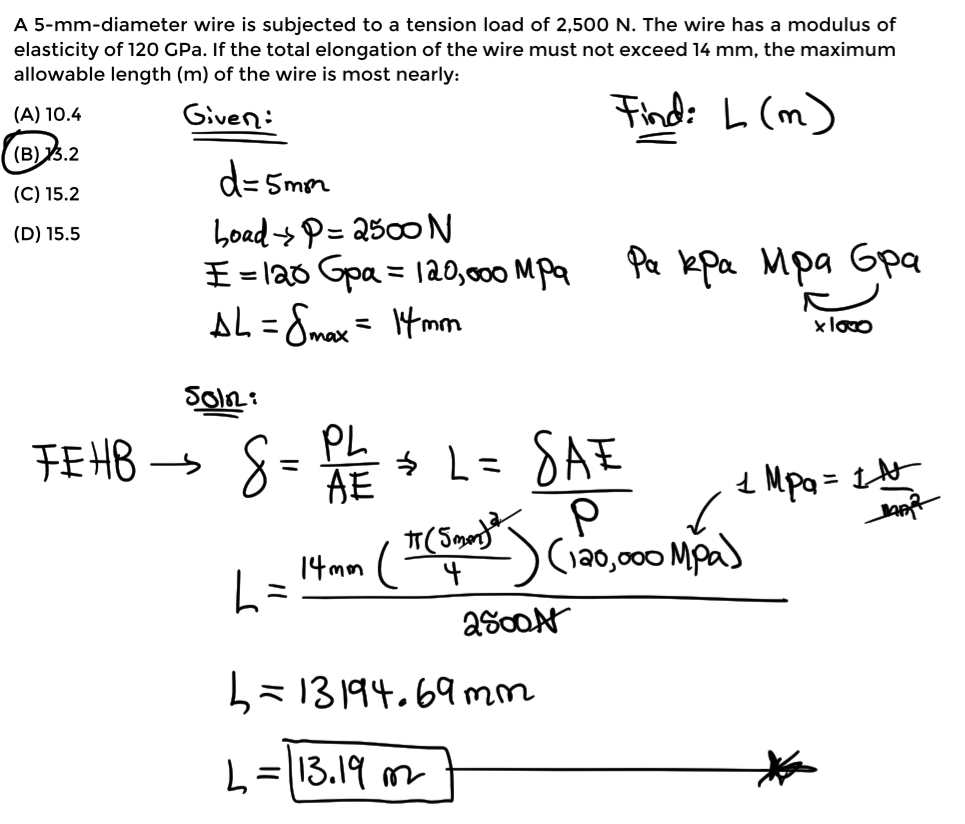
Do you want to move forward with your career by passing your Civil FE exam in the coming months? My Civil FE prep course will give you the right mindset and problem-solving skills to do just that. What’s stopping you from starting today? Shoot me a message if you need help getting started!

CIVIL FE EXAM PREP COURSE
best fe exam prep course
best fe exam review course
best fe exam prep
fe exam prep courses
fe quick review civil


